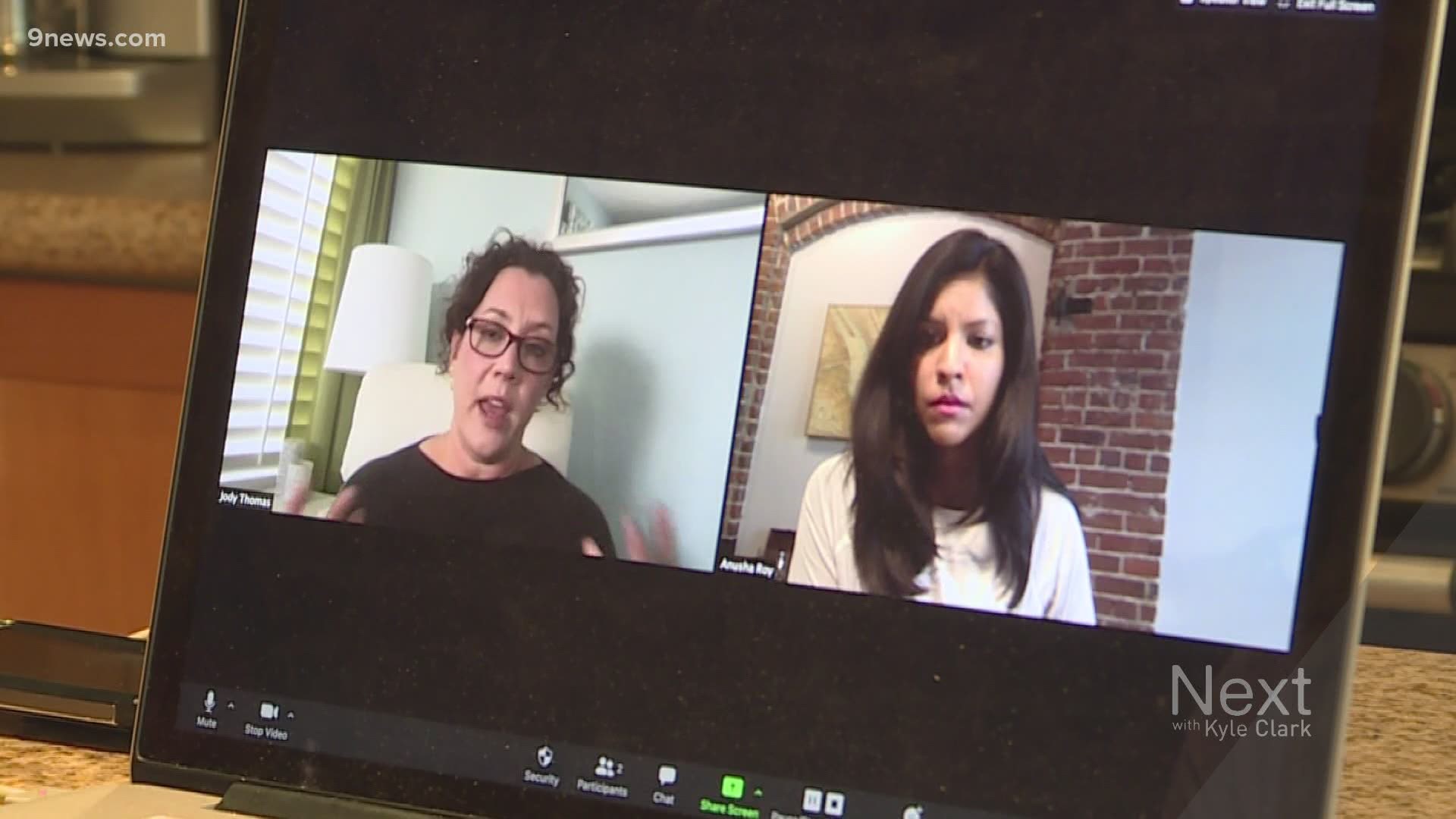DENVER — The recommendations have stayed the same: limit screen time for kids.
But, with remote learning happening for so many families this upcoming school year, some clinical psychologists said parents are asking how to strike a balance ... and what the longer term effects could be with so much more screen time.
"Lets be real, up until COVID, we weren't thinking about how much time second graders were spending on video conferencing platforms," Clinical Psychologist Jody Thomas said.
Thomas said remote learning is a different beast than other forms of screen time like video games.
"That's different when interacting with other humans in school than it is if we're just playing a video game or watching a show," she said. "The very platform itself has a likelihood of not being as dangerous, quote on quote, or concerning."
"What it's going to be like for them on Zoom or Google Hangouts for hours, honestly we don't know because it's really new," she added.
In an e-mail, Dr. Laura Anthony, a psychologist with Children's Hospital said it's unlikely that parents will be able to limit screen time during the pandemic and remote learning ... let alone while they're working from home.
"Let go of the stress and guilt, as that's going to do more damage to your child's mental health than screens," she said.
She emphasized that different kinds of screen time aren't the same.
"Remote learning is not the same thing as watching TV, for example," Anthony said. "Remote learning will happen at a developmentally-appropriate pace, is not passive the whole time, and is important for your child's education and socialization (I'm not saying you can't let your kids watch TV either!).
"I tell parents that remote learning doesn't even count as screen time. Neither does video chatting with family or friends."
When it comes to recommendations, Anthony said it's important to try and spend a little time outside every day and aim to try and do something fun every day.
Thomas said if kids end up watching extra TV that is ok. Perhaps make dinner time a no-screen time.
She also said spending time outside is a great way to give the brain and eyes a break.
Thomas said it's important for adults to model this kind of behavior by intentionally putting phones and electronics down.
School districts are also working on how to help.
Denver Public Schools
The district anticipates most students will average four hours a day of instruction screen time with breaks in between class.
The district is providing schools with recommendations on remote learning schedules, according to the grade level.
In an e-mail, the district said:
"As students begin the new school year learning remotely, we are providing guidance for students and families to help support remote learning. Students are expected to attend classes as scheduled during the normal school day. Synchronous and asynchronous learning will allow for students and families to have some flexibility, while also ensuring students receive instruction from their teachers, have opportunities to interact with their classmates and stay engaged with their school community. We recommend families limit non-educational screen time to no more than two hours per day.
In addition, we encourage families to have a quiet, dedicated space for remote learning and to follow a daily routine to help support students' learning."
Jeffco Public Schools:
The district expects the online learning option will include at least three hours of synchronous learning every day. This will vary by school and grade level.
In an e-mail the district said:
"While remote-only learning by its nature involves more screen time than in-person learning, students will have assignments and activities they are given to complete on their own, just like in the "regular" in-person learning environment, that do not necessarily require being on the computer or another device like reading, science experiments, art projects, and more. "
The district also shared a Digital Wellness page.
As of Wednesday, around 25% to 27% of families in the district chose the remote-only learning.
Douglas County
The district shared a sample schedule for elementary school kids that includes a recess and lunch break. The rest of the day is a combination of online and independent learning. The exact schedule will vary depending on the grade and school.
Older kids could also see emotional check-ins and yoga classes worked into their schedule.
SUGGESTED VIDEO: Full Episodes of Next with Kyle Clark

